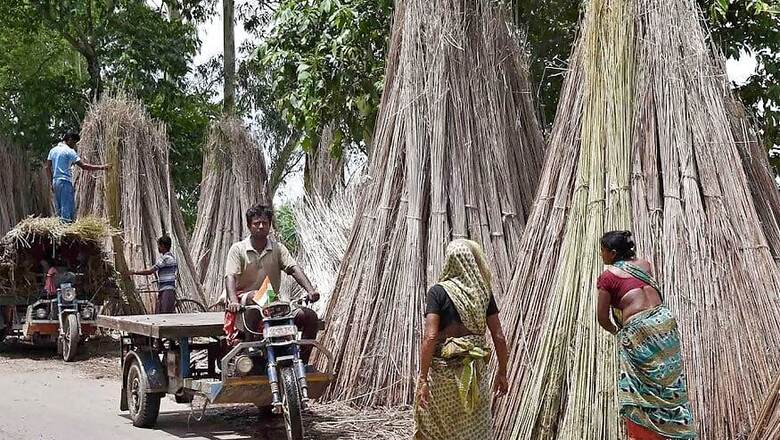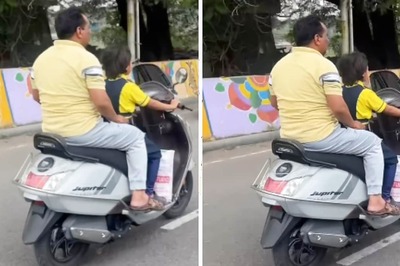
views
There are many castes among marginalised communities whose traditional skills have no place in the new system. They do not want to work as labourers because they are skilled.
When, after 1990, the era of liberalisation came and the market was freed of socialist compulsions, some of us welcomed it and others opposed it.
Many termed it the era of market. This market proved to be ‘Mina Bazar’ for some and ‘Maya Bazar’ for others. While the market gives prosperity to few, it makes others realise that they are deprived. To control this, the image of nation-state was formed.
We are approaching 30 years of completion of neo-liberal economy in India. This relationship of state and market was to increase equality and produce less discrimination in society. This idea is yet to be fulfilled.
While the numbers of service providing institutions and civil societies aiming to make the relationship of state and market less conflicting have risen, their ability to make qualitative interference is yet to be strengthened.
Many of these civil society NGOs are either not understanding the relationship of market and critical relations of discrimination or are ignoring them for various reasons despite understanding them.
Here we would like to analyse the relationship of Dalit groups of India with newly emerged market in a special context. For a section of Dalits, those who have acquired the capacity to dream better lives and achieve them, market has provided the way to move forward.
Some of them have acquired some amount of happiness, comfort through trade and jobs generated through liberal economy. Such Dalit groups have joined themselves with education and desire to develop and established themselves as an aspirant communities.
A larger population of Dalits is standing on the door front of market as ‘confused about occupation’. Such groups can be called ‘communities in confusion’. They are unable to join themselves with new projects of social groups proposed by government like skill development projects and new ‘entrepreneurship’ programmes, microfinance schemes etc.
Basor, Hari, Begar, Musahar, Sanpere, Nat, Sarvan are such smaller Dalit communities who have not been able to join in enough numbers with the ‘microfinance’ projects running in the villages. The reach of self-help groups of microfinance has been limited to visible Dalit communities living on the margins of society and backward farming communities.
‘Power to save’ has not been developed in smaller Dalit communities. They have to dig the well daily. Drink daily. Earn daily. Eat daily. The earnings of everyday sometimes isn’t often enough to feed twice a day. Such communities have generally been artisanal communities of pre-modern social system.
These communities were considered artists and skillful in earlier systems. In the system of new market and modernism, their ‘skills’ became useless. In the system arising out of economical liberalism there is no other option left for them other than to be labourers in the expansion of market, real estate, building development projects. They don’t want to become labourers. They believe that they are ‘skilled community’.
As a result, they can’t establish themselves in an expanding market. They are feeling uncomfortable in such market system.
Bansfod (Basore) living in different states of Northern India is such a dalit community. In the traditional system they earned their livelihood by cutting bamboo and making products of it. Mauni people used to make and sell SOOP for livelihood. Now, the presence of bamboo has decreased, there is an indirect stop on cutting bamboo as well, so they have no other option than to be labourers in building or another construction projects. ‘Sarvan’ is a community which has worked as ear cleaners. They used to make medicines for this from herbs and shrubs growing in villages. But now this livelihood is becoming useless. Doctors of ears are everywhere now. There are English medicines to clean the ear. Due to this their livelihood has become problematic. What should they do now? They consider themselves ‘skilled community’ therefore they cannot accept the condition of their transformation in labourer community.
While the livelihoods of social communities like launderers and barbers are ‘adjusting’ in the market, many social communities which know traditional livelihoods are feeling helpless and troubled at the gates of market. Such is the story of Sapera community.
This community is spread in Bihar, Uttar Pradesh, Madhya Pradesh, Rajasthan, Punjab, Haryana and many states of South India. This community used to catch snakes, take their teeth out, make them dance, make medicines of different kinds from their poison. Now in modern social structure under animal security laws their livelihood is almost banned. As such, this whole community is deprived of their traditional livelihood. Now they have no other option than to be laboureres at construction projects or brick factory.
Kuchbudhiya is such a dalit community which lives in different districts of Uttar Pradesh. Their numbers are mostly in Bundelkhand. This community used to make ropes of rural products like mooj, sarpat, and weaved the bed. With the coming of plastic rope even their livelihood is in danger. They have reservations in being transformed as labourers in the idea of smart city.
As such, how would state and market respond to such smaller dalit communities to them, remains to be seen. This too remains to be seen that how our state, power and market manage to create a ‘dignified livelihood’ for them.
(Badri Narayan is a Social Scientist at GB Pant Social Science Institute in Allahabad. Views are personal.)




















Comments
0 comment